906x680 The Wild Hunt and the Coming of The Winter Court. Image courtesy of Mark Taylor and The Beltane Fire Society

In a city as steeped in the supernatural as New Orleans, it is only natural that Hallowe’en is one of the Crescent City’s most loved celebrations. Costuming, known as “guising” in Scotland, is part of most celebrations in New Orleans, as is street parties, performance art, and revelry.
Whether attending the annual Witches’ Ball at the Van Benthuysen – Elms Mansion, catching throws at the Krewe Of Boo parade, or getting down at Voodoo Fest, New Orleanians embrace the spirit of Hallowe’en with a customary gusto. But Hallowe’en is not all candy apples and parties. According to historians, its origins date all the way back in time to the ancient Celtic festival of Samhuinn.
For the ancient Celts, each year was measured in a circular, not linear, fashion. As the great wheel of the year turned, it was celebrated by various equinoxes and solstices and anchored by four main festivals – Imbolc, Beltane, Lughnasadh, and Samhuinn.
The Celtic year began with Samhuinn, which was celebrated in the last days of October and marked the end of summer and harvest and the beginning of winter. As the days became colder and darker, the boundaries between the world of the living and the world of the dead also grew thin, allowing ghosts and other otherworldly creatures to enter the world of the living.
While the ancient Celts believed these eldritch visitors were not necessarily unwelcome, as time went on, and the traditions changed, people began to use costumes and masks to confuse unwanted supernatural callers, giving rise to the modern tradition of Hallowe’en costumes.
Over the centuries, Samhuinn and other ancient festivals and traditions were absorbed by new religions. With the rise of Christianity across Europe, many traditional Celtic celebrations, such as Samhuinn, were repressed, reinvented, and absorbed into the new Christian traditions and feast days. Yet, even now, many Hallowe’en traditions still reflect their ancient origins.
When Pope Gregory III (731 – 471) expanded the Catholic feast of All Martyrs Day (established by Pope Boniface IV in 609 A.D.) to include all saints, he also moved the day of observance to November 1. In 1000 AD., the church declared November 2, All Souls Day, and with November 1 now commonly called All Saints’ Day or All-hallows, the night before - October 31, the traditional night of Samhuinn - became known first as All-hallows Eve, and, eventually, as Hallowe’en.
In Mexico, families visit graveyards on November 1 and 2 (Día de los Inocentes and Día de los Muertos), while according to tradition in New Orleans, families visit the city’s magnificent graveyards on All Saints Day to beautify the graves of lost loved ones. But on Hallowe’en night in Edinburgh, Scotland, the age-old traditions of both Samhuinn and Beltane have been brought back to pagan life by The Beltane Fire Society.
The Society celebrates all four cornerstones of the Celtic year - its Beltane Festival takes place on Calton Hill on April 30, while Samhuinn is celebrated on the cobble streets of Edinburgh’s Old Town on Hallowe’en night.
“Edinburgh’s Old Town has historic significance as a site of ancient markets and All Hallows fairs, street theatre and performances - especially of the Galoshan plays from which our performance takes its structure,” Tanya Simpson, the online communications coordinator for the Beltane Fire Society told WWOZ.
The Samhuinn performance embodies the overthrowing of Summer by Winter, explained Simpson, portraying a stand-off between the Summer and Winter Kings overseen by the Cailleach, a Celtic representation of the Goddess, or Divine Hag.
“The transformation from Summer to Winter is supported by the energies and interactions of the Summer and Winter courts – through performance, music and dance,” said Simpson “The narrative focuses on this conflict and its resolution, but also focuses on the transition that many aspects of life take during the changing of the seasons.”
Something to think about when enjoying New Orleans’ upcoming Hallowe’en events!
More information about the Beltane Fire Society in available at beltane.org
In the spirit of Samhuinn, a supernatural Music in the Glen will feature Celtic songs of ghosties and ghoulies and long-legged beasties and things that go bump in the night. Don’t look behind you!
Music In The Glen, every Saturday from 10 a.m. to 11.30 a.m., on WWOZ 90.7 FM.



















